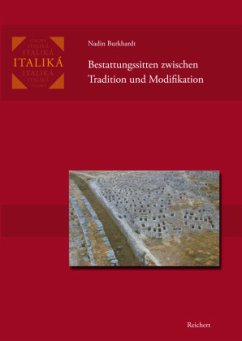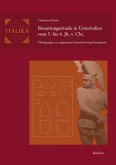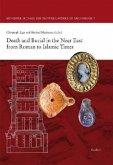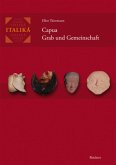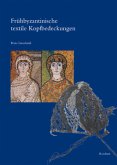This study focuses on cultural exchange and aspects of acculturation, which go back to the Greek settlement in Lower Italy and Sicily and result from the coexistence of the Italic and Sicilian population and the Greek settlers.
The development of tomb types, funerary goods and funeral rites is used to study diverse influences such as the relations between the colony and the motherland, among the colonies themselves as well as between the colonies and their surrroundings and the people living nearby. The study uses three case studies - the Euboean settlements Pithecoussai and Kyme in Campania, the Achaean colony Metapontion and the Spartan city of Taras in Lower Italy, and the Rhodian-Cretan colonies Gela and Akragas in Sicily.
Hinweis: Dieser Artikel kann nur an eine deutsche Lieferadresse ausgeliefert werden.
The development of tomb types, funerary goods and funeral rites is used to study diverse influences such as the relations between the colony and the motherland, among the colonies themselves as well as between the colonies and their surrroundings and the people living nearby. The study uses three case studies - the Euboean settlements Pithecoussai and Kyme in Campania, the Achaean colony Metapontion and the Spartan city of Taras in Lower Italy, and the Rhodian-Cretan colonies Gela and Akragas in Sicily.
Hinweis: Dieser Artikel kann nur an eine deutsche Lieferadresse ausgeliefert werden.
"Mit ihrer groß angelegten Synthese hat Nadin Burkhardt eine Arbeit mit Handbuchcharakter vorgelegt, die einen quellen- und literaturgesättigten Überblick bietet und auch für Teilbereiche bequem zu konsultieren ist."
Matthias Hoernes
In: Göttinger Forumg für Altertumswissenschaften 18, 2015, 1021-1030.
--------------------------------------------
"Viele Besonderheiten des Bestattungswesens lassen sich weder durch Rückbezüge aus der Heimat der Kolonisten noch durch Einflüsse von den einheimischen Kulturen Italiens allein erklären. Vielmehr zeigt sich, und das ist das nicht geringe Verdienst der vorliegenden Arbeit, dass die Bestattungssitten in den Kolonien von Beginn weg eigenständige Wege gehen, geprägt von den neuen Lebensumständen der Kolonisten, den spezifischen naturräumlichen Gegebenheiten und dem Bestattungsverhallen der einheimischen und griechischen Nachbarn"
Martin A. Guggisberg
In: Museum Helveticum, Vol. 72, Fas. 1, 2015, S. 109.
Matthias Hoernes
In: Göttinger Forumg für Altertumswissenschaften 18, 2015, 1021-1030.
--------------------------------------------
"Viele Besonderheiten des Bestattungswesens lassen sich weder durch Rückbezüge aus der Heimat der Kolonisten noch durch Einflüsse von den einheimischen Kulturen Italiens allein erklären. Vielmehr zeigt sich, und das ist das nicht geringe Verdienst der vorliegenden Arbeit, dass die Bestattungssitten in den Kolonien von Beginn weg eigenständige Wege gehen, geprägt von den neuen Lebensumständen der Kolonisten, den spezifischen naturräumlichen Gegebenheiten und dem Bestattungsverhallen der einheimischen und griechischen Nachbarn"
Martin A. Guggisberg
In: Museum Helveticum, Vol. 72, Fas. 1, 2015, S. 109.

